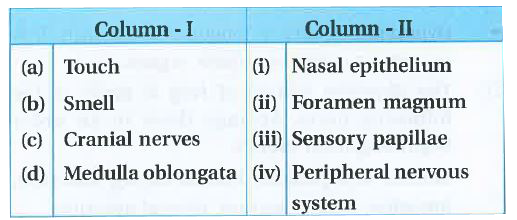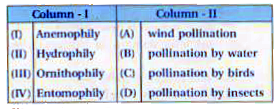Which of the following is/are resultant of a proclamation of National Emergency because of war? I. The Union Government can give directions to the States about how the executive power of the State is to be exercised. II. The Fundamental Rights stand automatically suspended. III. The State Legislature is suspended. IV. Parliament can make laws with respect to any subject in the State List. a I II and IV b I III and IV c I only d I and IV
The correct option: d I and IV
Related Solutions
राज्य सूची के विषयों पर संसद विधि निर्माण कर सकती है, यदि
View SolutionWhich of the following is correct about the distribution of legislative subjects between the Center and the States? (P) Only the Central Government can make laws on the subjects given in the Union List. (Q) Both the Union and the State Government can make laws on the subjects given in the State List.
View SolutionCan the Union Parliament frame laws on the subjects mentioned in the state list? Explain.
View SolutionWhich among the following is/are organ/organs of Indian Government?
I. The Media
II. The Legislature
III. The Executive
IV. The Judiciary
View SolutionWhich of the following are not state functions of state variables? (i) Internal energy (ii) Heat (iii) Work (iv) Volume
View Solutionराष्ट्रीय आपातकाल की उद्घोषणा स्वत: निलम्बित करती है
View SolutionArrange the following in the correct sequence (i) Allied victory in Europe (ii) Proclamation of Weimar Republic (iii) World War I begins (iv) The United States joins Second World War
View SolutionWhich of the following is true about the rights of the Center and the States to make laws? P Both the Union and the State Governments make laws on the subjects of the Concurrent List Q If there is a difference of opinion between the Union law and the State law on the subject of the Concurrent List, the Union law shall prevail
View SolutionMatch the column-
View Solution_______ can empower the Parliament to make laws on the subjects of the State List
View SolutionBoth the union and the state government can make laws on the subjects mentioned in the:
View SolutionBoth the union and the state government can make laws on the subjects mentioned in the:
View SolutionName the subject list from which both the Union and the State governments can make laws?
View SolutionName the subject list from which both the Union and the State governments can make laws?
View SolutionName the subject list from which both the Union and the State governments can make laws?
View SolutionMatch the followings and choose the correct answer.

(A) (a - iii), (b - i), (c - ii), (d - iv)
(B) (a - ii), (b - i), (c - iv), (d - iii)
(C) (a - iii), (b - iv), (c - ii), (d - i)
(D) (a - iii), (b - i), (c - iv), (d - ii)
View SolutionMatch the following with reference to cockroach and choose the correct option. (A) (a - iii), (b - iv), (c - ii), (d - i) (B) (a - iv), (b - iii), (c - ii), (d - i) (C) (a - iv), (b - ii), (c - iii), (d - i) (D) (a - ii), (b - iv), (c - iii), (d - i)
View SolutionMatch the followings and choose the correct answer. (A) (a - ii), (b - iii), (c - iv), (d - i) (B) (a - iii), (b - ii), (c - iv), (d - i) (C) (a - i), (b - iii), (c - ii), (d - iv) (D) (a - ii), (b - iv), (c - iii), (d - i)
View SolutionAnswer the following questions with respect to I law of thermodynamics.
(i) State the law
(ii) Give its mathematical expression
(iii) List out its limitations
View SolutionMatch the two columns:

(A) (I-A), (II-B), (III-C), (IV-D)
(B) (I-B), (II-A), (III-C), (IV-D)
(C) (I-A), (II-C), (III-B), (IV-D)
(D) (I-D), (II-B), (III-C), (IV-A)
View Solution